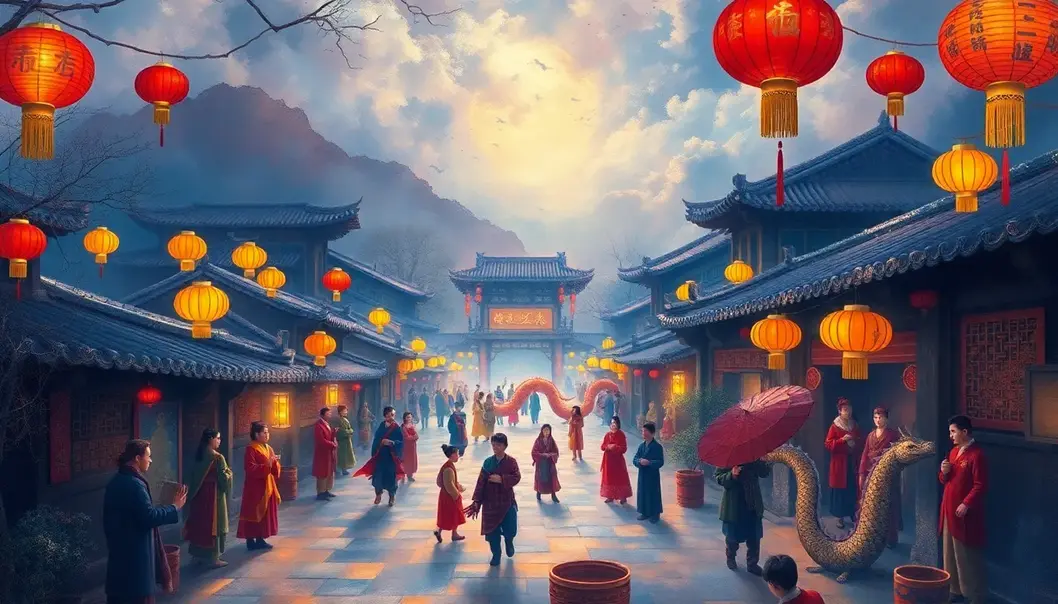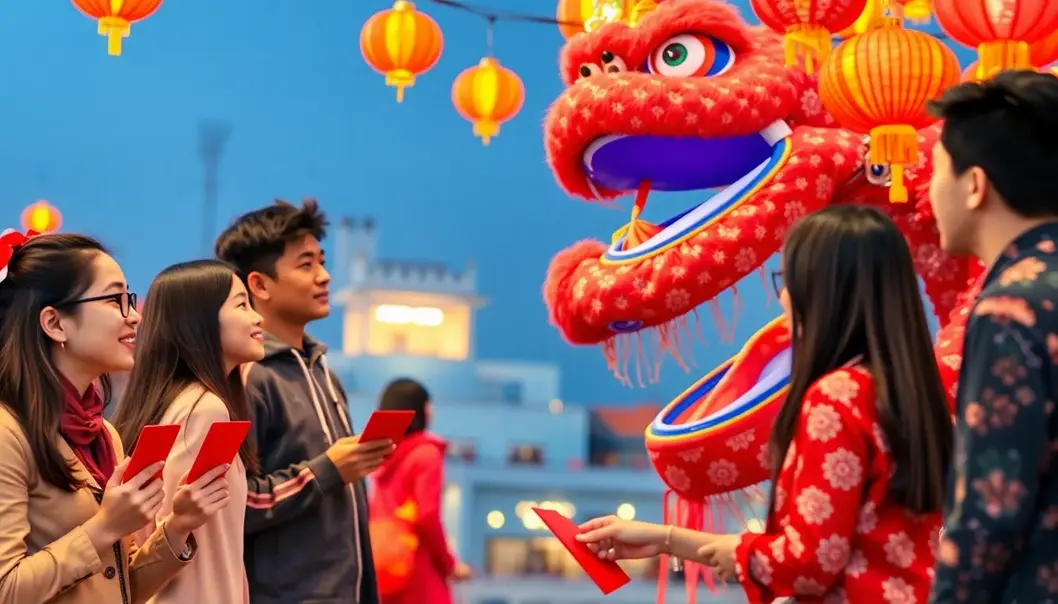Get ready to dive into a world where dragons dance, fireworks light up the sky, and red packets bring smiles! Welcome to the Lunar New Year, a festival that’s been lighting up lives for centuries. It’s more than just a new year; it’s a colorful explosion of culture, history, and awesome traditions that teens around the world can relate to. Ever wondered why the colors red and gold are everywhere, or why people eat dumplings like there’s no tomorrow? Let’s embark on this adventure to uncover the stories, customs, and the exciting way this festival is celebrated worldwide!
The Origins of Lunar Magic

Lunar New Year, known as the Spring Festival in China, is deeply rooted in ancient traditions and a rich tapestry of stories and beliefs. Tracing back more than 4,000 years, it has evolved into one of the most vibrant and widely celebrated festivals in the world. The origins of this annual event are steeped in myths and cultural lore, intertwining human history with celestial observations.
The inception of the Lunar New Year festival is shrouded in legend. One of the most popular tales tells of the mythical beast Nian, which would terrorize villagers at the start of each new year. Nian was said to be a fierce creature with sharp teeth and a hunger for human flesh. Villagers discovered that the beast was afraid of loud noises, bright lights, and the color red. Thus, the traditions of using fireworks, red decorations, and loud celebrations were born as means to ward off Nian’s threat.
This festival is closely linked with the lunar calendar, distinguishing it from the solar Gregorian calendar observed in much of the world. The lunar calendar is based on the cycles of the moon, with each month beginning on the new moon. This lunar system not only prescribes the date for Lunar New Year, which varies each year between late January and mid-February, but it also influences the timing of other significant feasts and festivals in the traditional Chinese year.
Historically, Lunar New Year marked the end of winter and the beginning of spring, a period of rejuvenation and rebirth. In ancient agrarian societies, this time was significant as it heralded the end of the most frigid days, allowing farmers to prepare for the upcoming planting season.
Beyond agriculture, the celebration has deep social significance. It is a time of family reunion and emphasizes the Confucian values of respect and honor towards one’s ancestors. Rapid urbanization and migration patterns in China have amplified this aspect, as many people travel long distances to their hometowns, highlighting the enduring importance of family bonds.
Over centuries, the festival’s customs have been adopted by and adapted for other cultures in Asia. Countries like Vietnam, South Korea, and Malaysia each have distinct ways of celebrating that reflect their unique traditions while still honoring the shared heritage of the lunar calendar. Thus, the Lunar New Year embodies a confluence of tradition, mythology, and historical significance, magically bridging ancient past with present celebrations, while setting the scene for teenagers today to discover their place in this grand cultural narrative without losing touch with its captivating origins.
Traditions and Modern Twists

Lunar New Year is a vibrant tapestry woven through centuries, with each thread representing a cherished tradition. One such tradition is the giving of red envelopes, or ‘hongbao’. These envelopes, filled with money, are gifted to younger family members to symbolize prosperity and good fortune for the year ahead. For teenagers, this tradition can be incorporated by creating digital red envelopes through apps, where monetary gifts can be sent with personalized messages, maintaining the spirit while embracing modernity.
The spectacular dancing dragon is another hallmark of Lunar New Year festivities. This dance is performed to scare away evil spirits and welcome an abundance of happiness. Teenagers today can participate by joining community groups that perform these dances, learning the meaning behind each move, and experiencing the coordination and teamwork required. For those more inclined towards social media, filming and sharing these performances can spread the enjoyment and cultural appreciation to a global audience.
Fireworks and firecrackers play an essential role in Lunar New Year celebrations, believed to ward off misfortune. While the tradition of lighting firecrackers continues, younger generations are turning to digital fireworks displays, shared through virtual events and online platforms. This blend of old and new allows the explosive joy of fireworks to be experienced safely, respecting noise restrictions and environmental concerns.
Across the globe, Lunar New Year is celebrated with unique local flavors. In places like Singapore and Sydney, parades and markets transform city streets, offering teenagers opportunities to experience a melting pot of cultures. These global celebrations often infuse local traditions with a Lunar New Year twist, such as incorporating Hawaiian dance in Hong Kong or organizing multicultural festivals in London.
Modern twists have also seen the addition of themed parties and virtual meetups, where friends gather online, dressed in traditional clothing, engaging in games that reflect cultural history. In this way, technology not only preserves but also extends the reach of Lunar New Year traditions, ensuring that they remain vibrant and relevant for teens around the world. For those interested in understanding more about the influence of traditions on modern relationships, visiting the language of love and understanding your dog can offer unexpected insights into shared rituals and bonds.
With each New Year, teens are discovering that they can honor their heritage while adapting to the digital age, ensuring these time-honored traditions shine as brightly as ever in today’s world.
Final words
Lunar New Year offers a rich tapestry of history and tradition that’s both fascinating and fun! From ancient roots to modern expressions, it’s a vivid reminder of our collective love for celebration and togetherness. Whether you’re tossing a dumpling or catching a dragon dance, each tradition is a doorway into a world of joy and connection. Celebrate it your way, and make some unforgettable memories!
Celebrate Lunar New Year like never before. Dive into the culture, history, and thrilling festivities!
Learn more: https://www.culturalfestivals.com/lunar-new-year
About us
Cultural Festivals Inc. offers a comprehensive guide to celebrating global festivities right at your fingertips. From events, history, to immersive experiences, discover the world’s traditions with us. Join our newsletter for unique insights and exclusive access to cultural events!